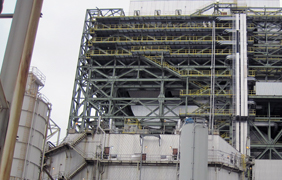Protecting Fabric Filter Bags During Startup
The first 24-48 hours of a filter bag’s operation can be the most critical in determining its overall life expectancy. The new bag’s unprotected fabric is vulnerable to high velocity particulate becoming embedded into the indices of the media. When this happens, trapped dust accelerates the blinding process, increases the average drag/restriction coefficient, and significantly shorten the bag’s life.
Flow rate permeability is an excellent way to measure the life stages and life expectancy of a bag. Permeability for new bags is usually in the range of 25-60 CFM/ft-2. For seasoned bags, the range is usually 5-10 CFM/ft-2. A blinded bag’s permeability may be less than 2 CFM/ft-2. Considering this large disparity in flow rates, it’s easy to see how new bags/compartments are able to receive a lot more gas/dust at a higher velocity than those that are old and blinded.
The key to preventing premature blinding is to follow three simple rules during startup.
- Apply a compatible protective precoat material to the filter bags before starting the process gas flow.
- Limit the gas flow to the new bags/compartment; a flow level at or near the design filtering velocity/air to cloth ratio is ideal.
- Reduce or stop the cleaning energy until the dust cake builds up to a level that requires cleaning.
Starting up a new bag is a critical operation that should not be taken lightly. Following the rules outlined above greatly reduces the chances of premature bag damage. Putting in this effort and attention now will pay dividends later in the form of a longer bag life, and energy/cost savings from reduced operating differential pressure.
Helpful Resources
KnowledgeBase: Misconceptions Overview
KnowledgeBase: FF Operation & Maintenance
Our Capabilities: Outage & Project Management
Our Capabilities: Analytical & Laboratory Services
Workshops & Training: Overview


